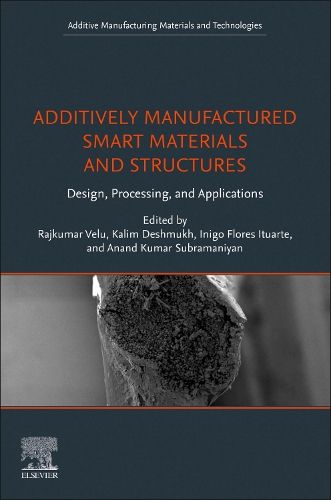Readings Newsletter
Become a Readings Member to make your shopping experience even easier.
Sign in or sign up for free!
You’re not far away from qualifying for FREE standard shipping within Australia
You’ve qualified for FREE standard shipping within Australia
The cart is loading…






Additively Manufactured Smart Materials and Structures: Design, Processing, and Applications provides a critical overview of the fabrication, design, processing, characterization, structure-property relationships, and applications of 3D printed smart materials. The book practically outlines design strategies and manufacturing techniques across a variety of disciplines, including membrane technology, catalysis, batteries, supercapacitors, sensing, biosensing, aerospace, automobile, construction, and biomedical. Users will find a critical evaluation of the scientific literature that has already been published to highlight the significance, the technoeconomic aspects, the major difficulties, and the benefits and drawbacks of additively built smart materials.
Advanced 3D printing techniques, including stereolithography (SLA), fused deposition modeling (FDM), selective laser sintering (SLS), electron beam melting (EBM), direct ink writing (DIW), and 3D plotting are discussed in detail. The book also offers a thorough analysis of the microstructure, mechanical, thermal, and surface properties of smart materials and structures produced using additive manufacturing.
$9.00 standard shipping within Australia
FREE standard shipping within Australia for orders over $100.00
Express & International shipping calculated at checkout
Additively Manufactured Smart Materials and Structures: Design, Processing, and Applications provides a critical overview of the fabrication, design, processing, characterization, structure-property relationships, and applications of 3D printed smart materials. The book practically outlines design strategies and manufacturing techniques across a variety of disciplines, including membrane technology, catalysis, batteries, supercapacitors, sensing, biosensing, aerospace, automobile, construction, and biomedical. Users will find a critical evaluation of the scientific literature that has already been published to highlight the significance, the technoeconomic aspects, the major difficulties, and the benefits and drawbacks of additively built smart materials.
Advanced 3D printing techniques, including stereolithography (SLA), fused deposition modeling (FDM), selective laser sintering (SLS), electron beam melting (EBM), direct ink writing (DIW), and 3D plotting are discussed in detail. The book also offers a thorough analysis of the microstructure, mechanical, thermal, and surface properties of smart materials and structures produced using additive manufacturing.